Input interpretation

1-nonene
Chemical names and formulas
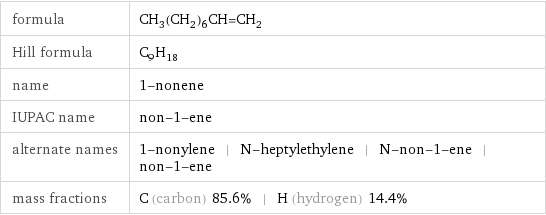
formula | CH_3(CH_2)_6CH=CH_2 Hill formula | C_9H_18 name | 1-nonene IUPAC name | non-1-ene alternate names | 1-nonylene | N-heptylethylene | N-non-1-ene | non-1-ene mass fractions | C (carbon) 85.6% | H (hydrogen) 14.4%
Lewis structure
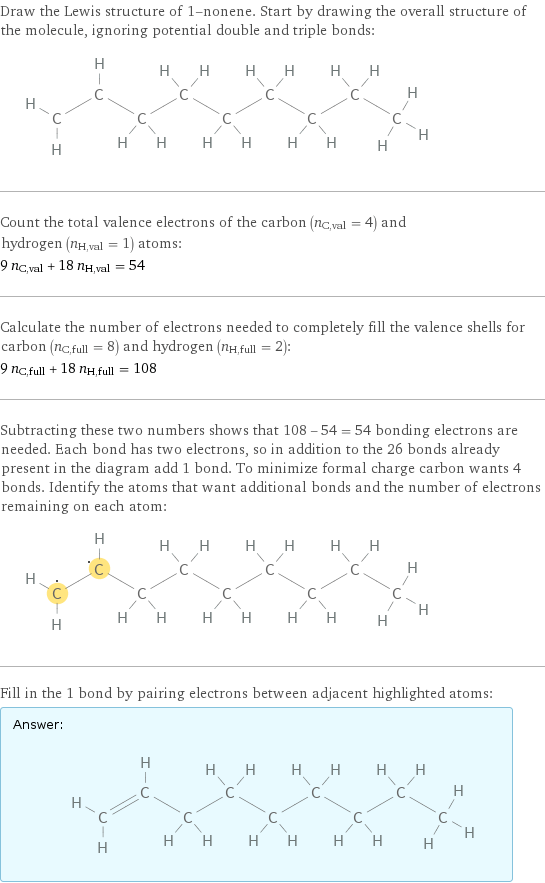
Draw the Lewis structure of 1-nonene. Start by drawing the overall structure of the molecule, ignoring potential double and triple bonds: Count the total valence electrons of the carbon (n_C, val = 4) and hydrogen (n_H, val = 1) atoms: 9 n_C, val + 18 n_H, val = 54 Calculate the number of electrons needed to completely fill the valence shells for carbon (n_C, full = 8) and hydrogen (n_H, full = 2): 9 n_C, full + 18 n_H, full = 108 Subtracting these two numbers shows that 108 - 54 = 54 bonding electrons are needed. Each bond has two electrons, so in addition to the 26 bonds already present in the diagram add 1 bond. To minimize formal charge carbon wants 4 bonds. Identify the atoms that want additional bonds and the number of electrons remaining on each atom: Fill in the 1 bond by pairing electrons between adjacent highlighted atoms: Answer: | |
3D structure

3D structure
Basic properties
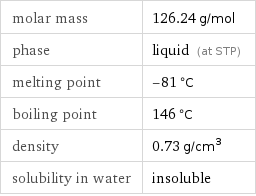
molar mass | 126.24 g/mol phase | liquid (at STP) melting point | -81 °C boiling point | 146 °C density | 0.73 g/cm^3 solubility in water | insoluble
Units

Liquid properties (at STP)
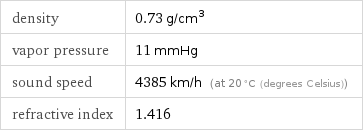
density | 0.73 g/cm^3 vapor pressure | 11 mmHg sound speed | 4385 km/h (at 20 °C (degrees Celsius)) refractive index | 1.416
Units

Thermodynamic properties
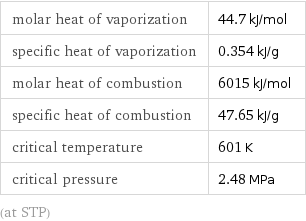
molar heat of vaporization | 44.7 kJ/mol specific heat of vaporization | 0.354 kJ/g molar heat of combustion | 6015 kJ/mol specific heat of combustion | 47.65 kJ/g critical temperature | 601 K critical pressure | 2.48 MPa (at STP)
Chemical identifiers
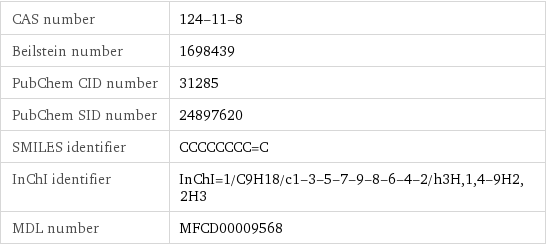
CAS number | 124-11-8 Beilstein number | 1698439 PubChem CID number | 31285 PubChem SID number | 24897620 SMILES identifier | CCCCCCCC=C InChI identifier | InChI=1/C9H18/c1-3-5-7-9-8-6-4-2/h3H, 1, 4-9H2, 2H3 MDL number | MFCD00009568
NFPA label

NFPA label
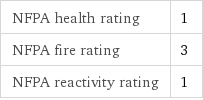
NFPA health rating | 1 NFPA fire rating | 3 NFPA reactivity rating | 1
Safety properties
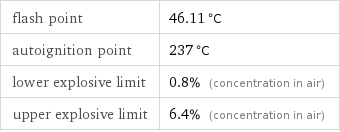
flash point | 46.11 °C autoignition point | 237 °C lower explosive limit | 0.8% (concentration in air) upper explosive limit | 6.4% (concentration in air)

DOT hazard class | 3 DOT numbers | 1993